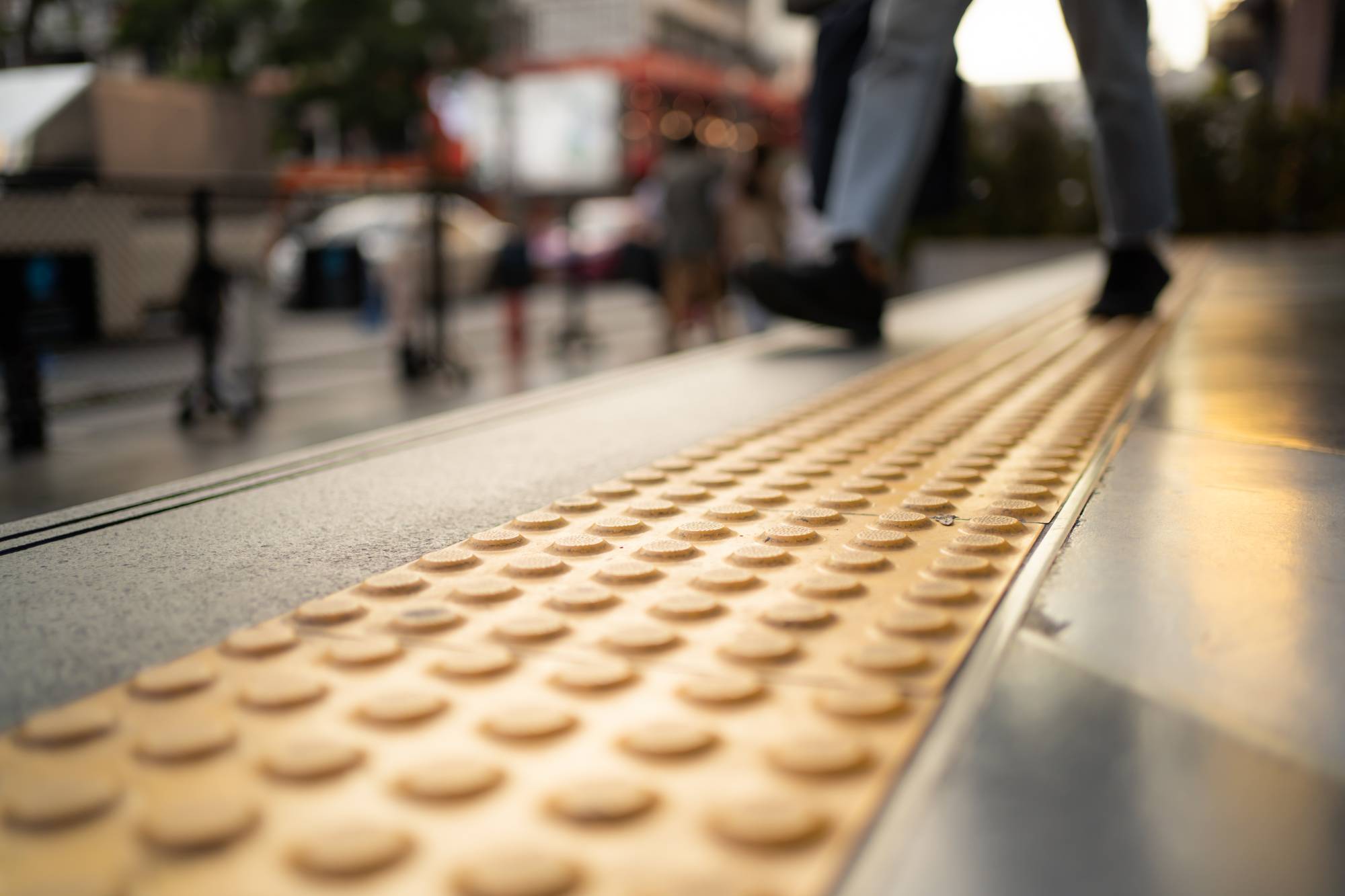From a global perspective, Japan was comparatively late in developing support for people with visual impairments. The country established its inaugural dedicated training facility in 1965, more than 40 years after the first such center in the world opened its doors in the United States.
Still, Japan was quick to excel. In that same year, an engineer based in Okayama Prefecture invented a travel aid so ingenious it would eventually become a universal way for visually impaired people to navigate their environments.
The revolutionary aid was tactile paving, a system of textured ground tiles that indicate potential hazards and direction of travel. Typically found at stairs, elevators and railway station platforms, the tiles are primarily yellow to allow them to be easily spotted by people with diminished — but not a complete loss of — vision. There are two predominant types of tiles: Those with raised dots indicate caution, while those with long, parallel strips provide directional cues.



